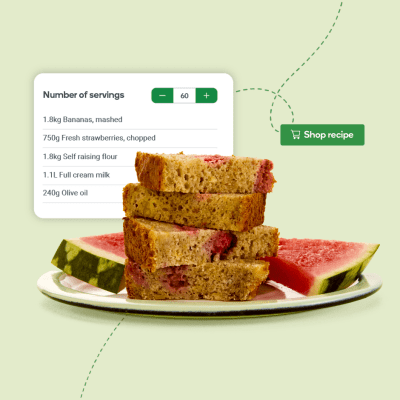Three-part harmony: Building relationships between procurement, accounts payable and operations
When it comes to procurement, the ideal is consistent ordering and supply of quality products in a program that stays within budget and is efficient to manage. But that ideal is underpinned by three departments – procurement, accounts payable and operations. How do these groups interact and what might happen if the three units worked in a more coordinated way?
Phillip McDonald, General Manager of Procurement at Woolworths Group, talks about what’s impacting procurement the most right now and how cohesion between procurement, accounts payable and operations creates a better customer experience and more alignment to business outcomes.
What are the most game-changing trends affecting procurement teams at the moment?
Reliability and security of supply. To capture supply where there is an undersupply is a real art. If you want to be prioritised in a situation, you need relationships with very significant partners; you need leverage in the supply chain; you need scale; and you need a presence in global markets. You also need real longevity in global markets – to have experience and connections.
That’s what we look for in our suppliers – and that’s what we are for the businesses we serve.
One of the most significant trends teams are facing is rising inflation. What insights can you offer to teams grappling with this issue?
Retaining profitability in this environment is a challenge. You can only mitigate inflation by doing things differently. We are mature enough to find ways to operate differently to reduce costs and help manage inflation. And we’re in a good position to work with suppliers to do the same.
Scale is a big part of that – we try to use our size to optimise and help businesses be more productive.
Phillip McDonald, General Manager of Procurement, Woolworths Group
What is Woolworths Group doing differently to optimise all its ‘pay to procure’ activities?
For a long time, large corporates have really siloed the procurement, operations and accounts payable functions from each other. We made a strategic decision to act as a collective to optimise all ‘procure to pay’ functions. At Woolworths we have a Procure to Pay (P2P) Tribe which is a peer-to-peer working group working closely with our Financial Shared Services team to link the process chain and ensure Procurement doesn’t create inefficiencies for our team members downstream in the Procure to Pay processes.
The value for procurement, and why we want to optimise payments, is because whether you’re paying on time or not influences the conversation with suppliers at the time of recontracting. By optimising payments to suppliers, we make sure we’re a customer of choice. So when we negotiate, we’re more likely to get a more favourable outcome. But we all need to work together to make it happen.
Having real mutuality between those groups is immensely effective. But you also need to orientate to your customers, not around the work you have to do.
So we are structuring internally around the user experience. We’ve just announced that we’re moving a number of roles from the procurement team to accounts payable to ensure a more engaging response for our internal stakeholders and suppliers. This consolidates our purchasing support and pay activity into one team with a first-level engagement point with the business and suppliers, so customers don’t have to decide who to contact around creating purchase orders, processing and paying invoices.
What are the challenges in bringing together such disparate groups, with different goals?
I see the opportunities more than the challenges. We all have a different role to play. And what stands out to me most is how much we achieve when we bring those different capability sets together. Problem solving is much faster and more effective.
Connectedness means we identify issues in the process quickly and resolve them; it means the teams begin to work synergistically and create real productivity.
Phillip McDonald, General Manager of Procurement, Woolworths Group
What’s the cost of not optimising that way?
You then become part of the procurement conversation you don’t want to be part of – fixing things. Then you end up taking out resources that should be focused on strategy and instead are focused on putting out fires.
What are you thinking ahead about right now?
My focus is about how the activities of the ‘procure to pay’ functions are integrated into the business. Are the things we’re doing being leveraged within the business in the right way to drive actual business outcomes?
Often procurement teams have targets that are oriented around savings, but that doesn’t necessarily work in a cost-inflation environment. I’m less interested in self-mandated and self-fulfilling targets and much more interested in making sure that the business knows everything they need to know about what will impact the company’s financial position and our cost of doing business. For example, if we contract a service that has cost inflation I want to ensure we report that financial data to the business stakeholders so they can understand how it will impact the P&L in the future.
What’s one thing you’d like to change across the industry?
We need to free up the procurement function to align to the business stakeholder objectives. Historically, procurement relies on the fact that they will save money in order to be relevant. Because of that drive and the focus on targets, you could end up not being connected to the business outcomes and stakeholder requirements. Our role will always be value orientated and to ensure we are maximising socially responsible outcomes, but the most important thing is for the Procurement function to provide an outstanding service to the business stakeholders that is relevant and valued. Unfortunately this is not always high on the procurement profession agenda.



